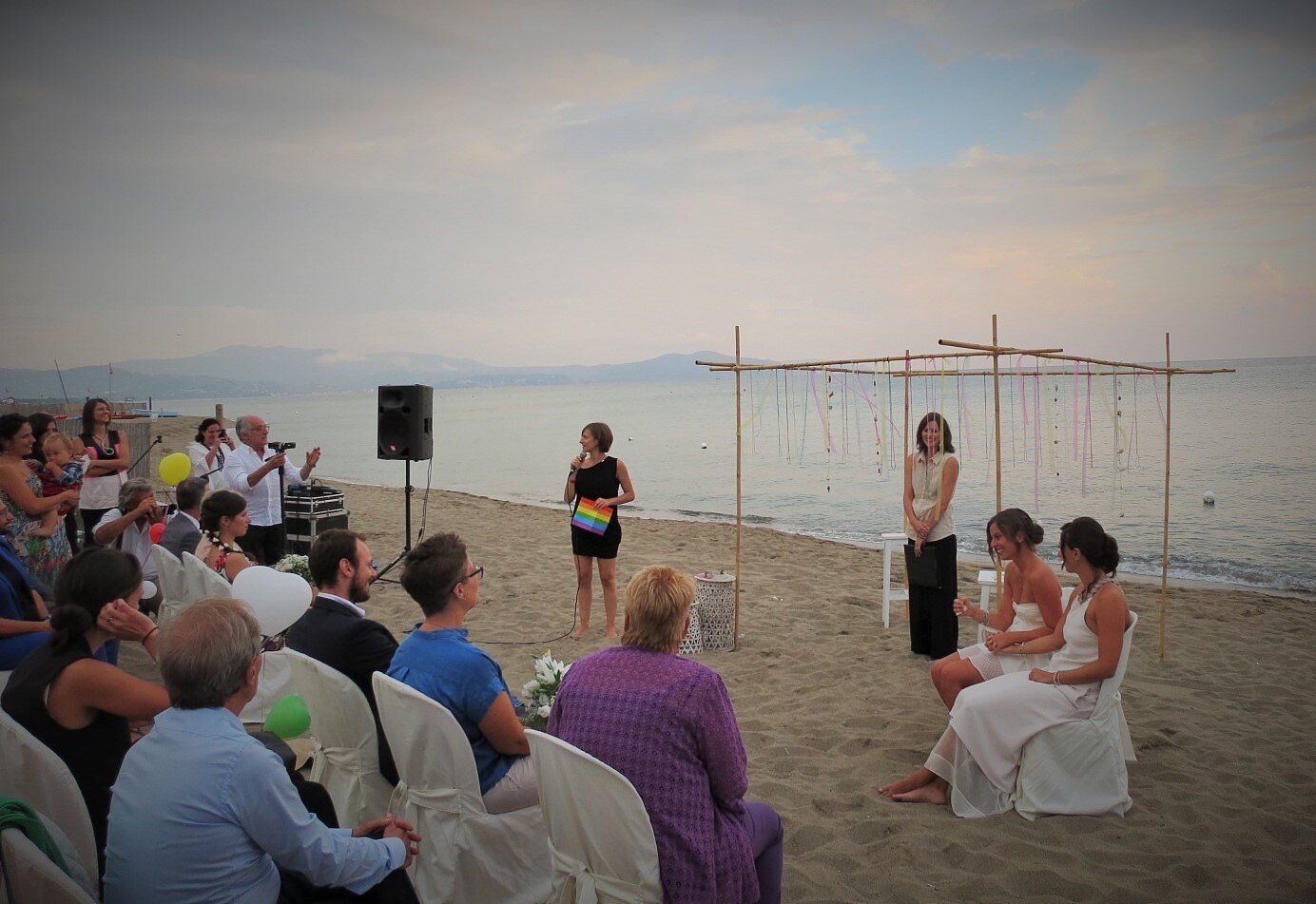Couple embrace at the “golden hour” after their wedding ceremony in Rome. Photo by Light & Dreams
Working in Italy we do many weddings in Italian and English. Sometimes one of the couple is Italian and the other from an English speaking country (or their shared language is English). Other times, both are Italian but they live and work overseas and have many international guests and therefore want to include them in their ceremony. For these reasons, we work with them to decide the best way to create a bilingual wedding ceremony.
There are various ways to do this and it’s a good idea to evaluate all your options before you start crafting the ceremony with your celebrant.
The celebrant’s role
One way is for the celebrant to write the script in both languages and officiate the entire ceremony alternating between the two. For example, after an introduction in Italian, it is then given in English, and so on for each part of the ceremony. This way everyone present can understand the whole ceremony, however it can make the ceremony a little long, and for those who understand both languages, it could potentially be repetitive.
video clip of celebrant Sarah Morgan in bilingual wedding ceremony in Italian and English in Puglia
To avoid this “consecutive translation” effect, the celebrant could welcome everybody in both languages, and then weave the other parts of the ceremony together using both languages but not in an exact translation. For example, in the Love Story (which is often the most personal and detailed elements the ceremony) the celebrant would use both languages so that all the guests are able to follow the story but without having to hear each detail twice, or laugh at the jokes again. This is a great challenge for the celebrant — a challenge we rise to with pleasure! — but it is usually very successful, inclusive, and emotional for both sides.
In either case, we advise switching over to the second language frequently so that guests do not have to sit through long spells without understanding anything..
A third way, especially if there is a small minority present who only understand one of the languages, would be to welcome them at the beginning and present the couple at the end in their own language. (We have actually done this in many different languages, even ones we don’t speak but it’s always nice to learn how to pronounce a short phrase!). Aside from these moments, the translation of the rest of the ceremony would be printed in advance in the form of a booklet. When the guests take their seats, they will find the booklet and be able to read along.
This format can also be used successfully for other parts of the ceremony such as readings. For example, we have done quite a few bilingual weddings where the couple chooses one reading in English and one in Italian and the translations are provided.
The vows
The vows can be the trickiest part of a bilingual wedding. What you certainly don’t want is for the guests to be able to read the vows before hearing the words from the couple! For this reason it is not a good idea to include them in any translation of the whole or parts of the ceremony.
So what should you do?
One way, even if the couple are both of the same mother-tongue, is for them to write their vows in a mixture of both. For example, Federica and Andrea chose to do this since, even though they are both Italian, they live international lives. They felt that using some English in their vows reflected their life and love, and it didn’t matter that not everybody could follow every word.
Little boy handing out vows at a bilingual wedding ceremony
Another way is to hand out the vows in a written form just before the couple pronounces them, which is what Valentina and Salvatore chose to do. This can be a nice way to include children who can be given the task of distributing them to your guests. Naturally, this involves the celebrant having previously translated them and/or having kept them away from everyone until that moment.
Video clip of bilingual ring exchange in Italian and English in Rome by Diego Mercadante
Another way that we have found to be very touching is for each person to pronounce their vows in the language of the other. This is what Nicoletta and Dàire chose to do when they exchanged rings. Hearing the bride speak to the groom in his language, and vice versa, before their families and friends from both backgrounds, was a very romantic and emotional moment and certainly showed their commitment to accepting one another’s language and cultured including their new families.


















